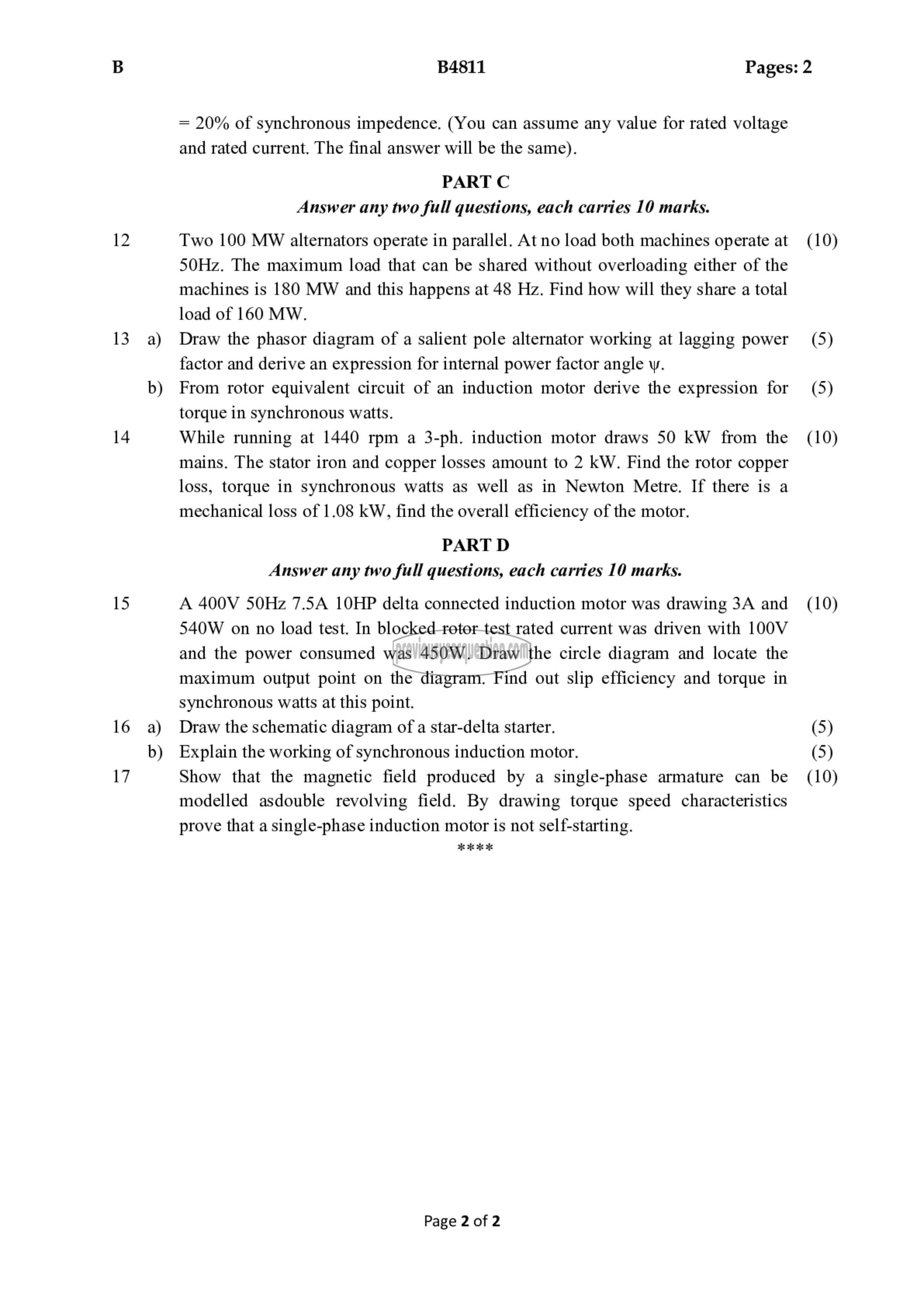APJ ABDUL KALAM TECHNOLOGICAL UNIVERSITY Previous Years Question Paper & Answer
Semester : SEMESTER 4
Subject : Synchronous and Induction Machines
Year : 2018
Term : APRIL
Scheme : 2015 Full Time
Course Code : EE 202
Page:2
12
13
14
15
16
17
b)
b)
B4811 Pages:
= 20% of synchronous impedence. (You can assume any value for rated voltage
and rated current. The final answer will be the same).
PART C
Answer any two full questions, each carries 10 marks.
Two 100 MW alternators operate in parallel. At no load both machines operate at
50Hz. The maximum load that can be shared without overloading either of the
machines is 180 MW and this happens at 48 Hz. Find how will they share a total
load of 160 MW.
Draw the phasor diagram of a salient pole alternator working at lagging power
factor and derive an expression for internal power factor angle மு.
From rotor equivalent circuit of an induction motor derive the expression for
torque in synchronous watts.
While running at 1440 rpm a 3-ph. induction motor draws 50 kW from the
mains. The stator iron and copper losses amount to 2 kW. Find the rotor copper
loss, torque in synchronous watts as well as in Newton Metre. If there is a
mechanical loss of 1.08 kW, find the overall efficiency of the motor.
PART D
Answer any two full questions, each carries 10 marks.
A 40017 50117 7.5A 10HP delta connected induction motor was drawing 3A and
540W on no load test. In blocked rotor test rated current was driven with 100५
and the power consumed was 450W. Draw the circle diagram and locate the
maximum output point on the diagram. Find out slip efficiency and torque in
synchronous watts at this point.
Draw the schematic diagram of a star-delta starter.
Explain the working of synchronous induction motor.
Show that the magnetic field produced by a single-phase armature can be
modelled asdouble revolving field. By drawing torque speed characteristics
prove that a single-phase induction motor is not self-starting.
FORK
Page 2 of 2
(10)
(5)
(5)
(10)
(10)
(5)
(5)
(10)
